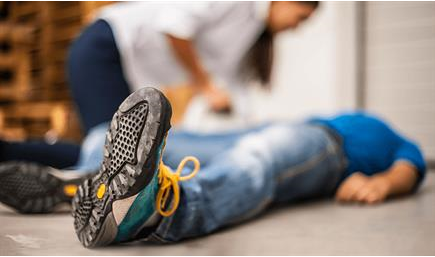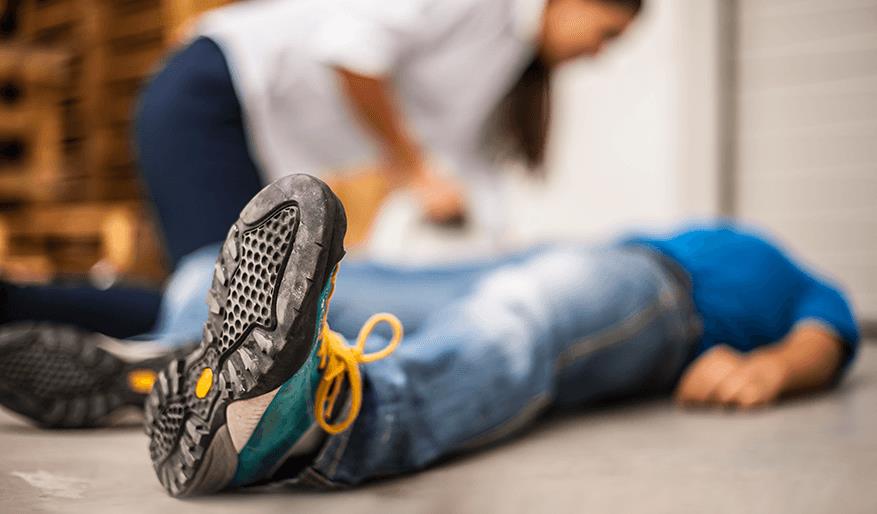Our Doctors
Meet all the doctors from Cleveland Clinic Abu Dhabi.
View Doctors
Seizures are not uncommon. Learn seven ways you can help.

One out of every 10 people will have a seizure during their lifetime. Seizures are a disruption of the normal electrical activity in the brain. Seizures are either partial, affecting a small localized part of the brain, or generalized, affecting the entire brain. Depending on the type of seizure, it may cause a loss of consciousness, uncontrolled movements, muscle stiffness or loss of control. They can also affect a person’s senses or emotions. Seizures can last for a few seconds or a few minutes. During that time, the person having the seizure may or may not be aware of what is happening to them. Later, they may not even remember what happened.
Seizures can be provoked by high fever, low blood sugar or electrolyte imbalance. Removing the provoking cause is enough to treat such seizures, and patients with such seizures do not qualify for a diagnosis of epilepsy. Two or more unprovoked seizures, on the other hand, lead to a diagnosis of epilepsy and these may result from conditions that affect the brain such as an area of malformation, genetic defect, tumor or sometimes without any obvious cause. Epilepsy is a common condition that affects about 50 million people worldwide.
If you are with someone who is having a seizure, it is important to stay calm. Be safe and avoid injuries by following these first response guidelines:
1. Steer clear
Keep the person from moving too close to dangerous objects or situations.
2. Get low
Help the person sit or lie down carefully on the floor.
3. Turn over
The person will breathe easier if they are lying on their side. Keep saliva out of the airway by making sure their mouth is pointed towards the ground.
4. Protect the head
Support the person’s head to keep it from hitting the floor.
5. Avoid choking
Don’t put anything in the person’s mouth. They might break their teeth or choke if they have something in their mouth during a seizure.
6. Let go
Don’t hold the person down or restrain them. It can be upsetting and cause injuries.
7. Be sensitive
Unless you need their help, ask others to move away and give the person some space. Stay until the seizure is over. Explain what happened in simple terms.
Seizures are not always an emergency but they need to be addressed. Call for emergency services if you notice the following:
Antiepileptic drugs (AEDs) can help people to gain control over their seizures. Medicines are the first line of treatment and there are more than twenty different types to choose from. Other types of treatment include undergoing brain surgery, following a ketogenic diet or using devices that prevent or control seizures. If medicines fail, brain surgery may be the treatment of choice for the ideal candidates. Determining whether a patient is a good candidate for epilepsy surgery requires careful evaluation by a team of caregivers including experts in epilepsy, brain imaging, psychiatrists and epilepsy surgery. For patients who are not candidates for epilepsy surgery, additional medication trials, specialized diets or electrical stimulation with devices such as Vagus nerve stimulation or responsive neurostimulation may be a consideration. The ketogenic diet is a high fat, low carbohydrate diet and there is a significant amount of evidence suggesting it can help treat epilepsy. The decision on treatment planning is made in close collaboration between the patient, their family and the epileptologist.
If you or someone you know has been diagnosed with epilepsy, you are not alone. Epilepsy is treated by a team of caring professionals who can help with this chronic disease.
.jpg)

Surviving a stroke holds significant impact on anyone’s life, but the disabilities that result from...
Read Articles
Obesity health risks factors & causes: There are several factors linked to an increased risk of...
Read Articles